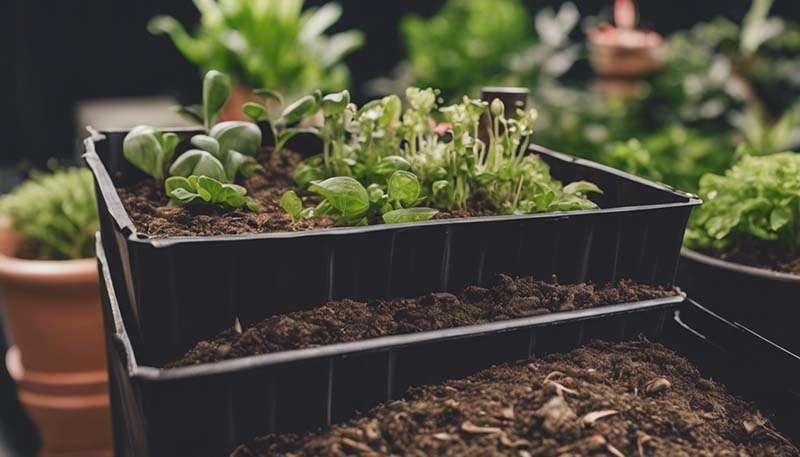Indoor Gardening and Sustainability: How to Use Composting
Sustainability is a growing concern in our modern world, and one of the ways to contribute to a greener lifestyle is through indoor gardening. Composting is a crucial aspect of this practice, as it allows you to recycle organic waste into nutrient-rich soil for your indoor plants. This article will explore the importance of composting in indoor gardening and provide practical tips on how to get started.
The Importance of Composting in Indoor Gardening
Composting not only helps in reducing waste but also provides your indoor plants with essential nutrients that promote healthy growth. It's a sustainable and environmentally friendly way to enhance your indoor garden's productivity.
Benefits of Composting for Indoor Gardening:
- Reduced Waste: By composting, you reduce the amount of organic waste that ends up in landfills.
- Soil Enrichment: Compost adds nutrients and organic matter to your plants' soil, improving its structure and water retention.
- Cost-Effective: Composting eliminates the need to purchase chemical fertilizers, saving you money.
- Sustainable Practice: It's a closed-loop system that recycles nutrients back into the soil.
- Improved Plant Health: Nutrient-rich compost can lead to healthier plants with fewer pest and disease problems.
How to Start Composting for Indoor Gardening
To start composting for your indoor garden, follow these steps:
Advertisement
1. Choose the Right Composting Bin
Select a compost bin that fits your space and needs. Indoor compost bins are compact and come with a lid to contain odors. Some are even electrically heated to speed up the composting process.
2. Understand What Can Go into Your Compost
Composting requires a balance of "greens" (nitrogen-rich materials) and "browns" (carbon-rich materials). For indoor gardening, common green materials include vegetable scraps and coffee grounds, while brown materials include dried leaves, paper, and small amounts of straw or wood chips.
3. Layer Your Compost Bin
Start with a layer of browns at the bottom of your bin, followed by a layer of greens. Continue to alternate layers, ensuring that you mix them up a bit to promote aeration.
4. Maintain the Right Conditions
Moisture and warmth are essential for composting. Your compost should be as damp as a wrung-out sponge. Turn the pile regularly to aerate it and speed up the process.
5. Use the Finished Compost
Once your compost has turned into a dark, crumbly substance, it's ready to use. You can mix it into your potting soil or use it as a top dressing for your indoor plants.
Common Composting Mistakes to Avoid
While composting is a simple process, there are a few common mistakes to avoid:
- Overwatering: Too much water can create an anaerobic environment that leads to bad smells and slow decomposition.
- Ignoring the Green-to-Brown Ratio: A proper balance is crucial for efficient composting. Aim for a ratio of 2:1 or 3:1 (browns to greens).
- Not Turning the Pile: Regularly turning the compost helps to aerate it and speeds up the decomposition process.
- Adding Incompatible Materials: Avoid meat, dairy, and diseased plants, as they can attract pests and create unpleasant odors.
Conclusion
Incorporating composting into your indoor gardening routine is a sustainable practice that benefits both your plants and the environment. By providing a source of natural nutrients, composting enriches your soil, reduces waste, and promotes a healthier, more self-sufficient indoor garden.

Remember: Every bit of organic waste that you compost instead of throwing away is a step towards a more sustainable lifestyle.
Comment